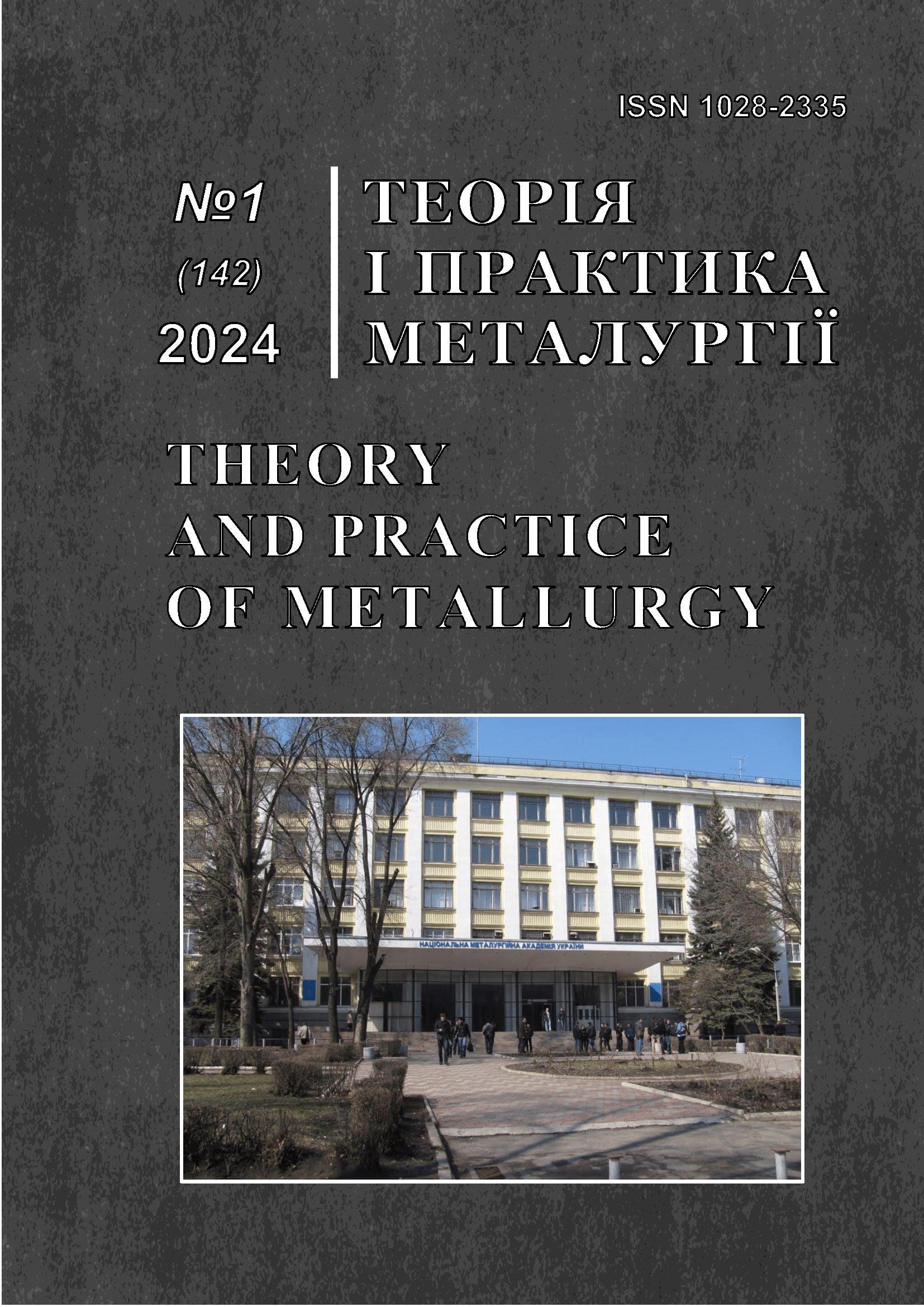Values of clear parameters for coke removal with specified powers
DOI:
https://doi.org/10.15802/tpm.1.2024.09Keywords:
central compositional orthogonal planning, weakly compacted coal, structural value of coke, coking, thermal pyrolysis, syrup base cokingAbstract
Carry out research into the optimization of the coal charge warehouse in order to replace the thick fraction of weakly adhesive coal to remove the necessary power from metallurgical coke. The investigation was carried out on the basis of the central compositional orthogonal plan. The investigation of the authorities was based on the additional significance of the structural value, abrasive hardness and flammability of the stripped coke from the added concentrate of weakly adhesive coal. With the help of a central compositional orthogonal plan, a statistical model was derived. Almost all of the different terms of the equations turned out to be significant, and some of the diversified values using the Student’s t-test showed values higher than the tabulated ones. Thus, if the equal regression is considered adequate, the remainder of the divergent values of the Fisher criterion may be more significant than the tabulated value of the Fisher criterion. The investigation made it possible to establish the patterns of influx of weakly adhesive coal concentrate into the house on the clear indications of the excess coke extracted from the mixture. Obtain the results of the investigation by infusing a concentrate of weakly abrasive coal, in addition to the central compositional orthogonal plan to allow the coking base to be expanded and the sobivartity of the coke to be reduced to be reduced.
References
Sorokin, Ye. L. (2018). Rozshyrennia syrovynnoi bazy koksuvannia za rakhunok vykorystannia slabkospiklyvoho malome-tamorfizovanoho vuhillia u vuhilnii shykhti. Uhlekhymycheskyi zhurnal, (2), 27
Starovoit, A. H., Kabak, T. A., & Sorokyn, E. L. (2013). Yzmenenye svoistv uholnykh fraktsyi slabospekaiushchehosia uhlia. In XXXIX Mizhnarodna naukovo-tekhnichna konferentsiia molodi VAT “Zaporizhstal” 2013: zb. tez dop., Zaporizhzhia, 5-6.12.2013.(pp. 13)
Sorokin, Ye. L. (2012). Rozrobka metodu rehuliuvannia yakistiu koksu. In Postup v naftoha-zopererobnii ta naftokhimichnii promyslovosti: zb. tez dop. VI Naukovo-tekhnichnoi konferentsii studentiv, aspirantiv ta molodykh uchenykh, Lviv, 25-28.04.2012. Vydavnytstvo Natsionalnoho universytetu ”Lvivska politekhnika”. (pp. 164)
Li, Z., Mu, L., Peng, L., Bai, H.-L., & Liu, X.-F. (2012). Correlation between the Concentration of Aromatic Hydrocarbons and BaP from Coke Oven Fugitive Emissions in Shanxi, China. Aerosol and Air Quality Research, 2012, 12, P. 1373-1378
Egorov, V. M., & Malyi, E. I. (2003). Kamennougolnye fusy kak sviazuiushchee i vosstanovitel pri poluchenii rudno-uglerodistykh briketov. Uglekhimicheskii zhurnal, (1-2), 47-48
Sorokin, E. L. (2019). Povyshenie kachestva koksa dlia nedomennykh proizvodstv. Slovak international scientific journal / Chemistry, 1(35), 5-8
Sorokin, Ye. L., & Dovhopolyi, O. I. (2008). Doslidzhennia vplyvu dobavky khromitovoi rudy na fizyko-khimichni ta fizyko-mekhanichni vlastyvosti koksu. In Vdoskonalennia vyrobnytstva palyva ta vuhletsevykh materialiv, yak chynnyk rozvytku metalurhii ta enerhetyky: materialy Vseukrainskoi naukovoi konferentsii studentiv ta molodykh uchenykh. Dnipropetrovsk. (pp.10-12)
Egorov, V. M., & Sorokin, E. L. (2002). Utilizatsiia krasnykh shlamov v koksokhimicheskoi promyshlennosti. Uglekhimicheskii zhurnal. (5-6), 47-48
Pinchuk, S. I. (2002). Osnovy nauchnykh issledovanii i organizatsiia eksperimenta (razdel “Planirovanie ekspe-rimenta”). Konspekt lektsii dlia studentov spetsialnostei: 7.090401, 7.090103. NMetAU
Barskii, V. D., & Kogan, L. A. (1975). Prakticheskii matematiko-statisticheskii analiz v koksokhimii. Metallurgiia
Downloads
Published
How to Cite
Issue
Section
License
Copyright (c) 2024 Kashirnaya N.O., Korenev O.V., Sorokin E.L. Starovoit A.G., Maliy E.I., Starovoit M.A.

This work is licensed under a Creative Commons Attribution 4.0 International License.
Authors retain copyright of the published papers and grant to the publisher the non-exclusive right to publish the article, to be cited as its original publisher in case of reuse, and to distribute it in all forms and media. Articles will be distributed under the Creative Commons Attribution 4.0 International (CC BY 4.0) licence.
Authors can enter the separate, additional contractual arrangements for non-exclusive distribution of the published paper (e.g., post it to an institutional repository or publish it in a book), with an acknowledgement of its initial publication in this journal.




